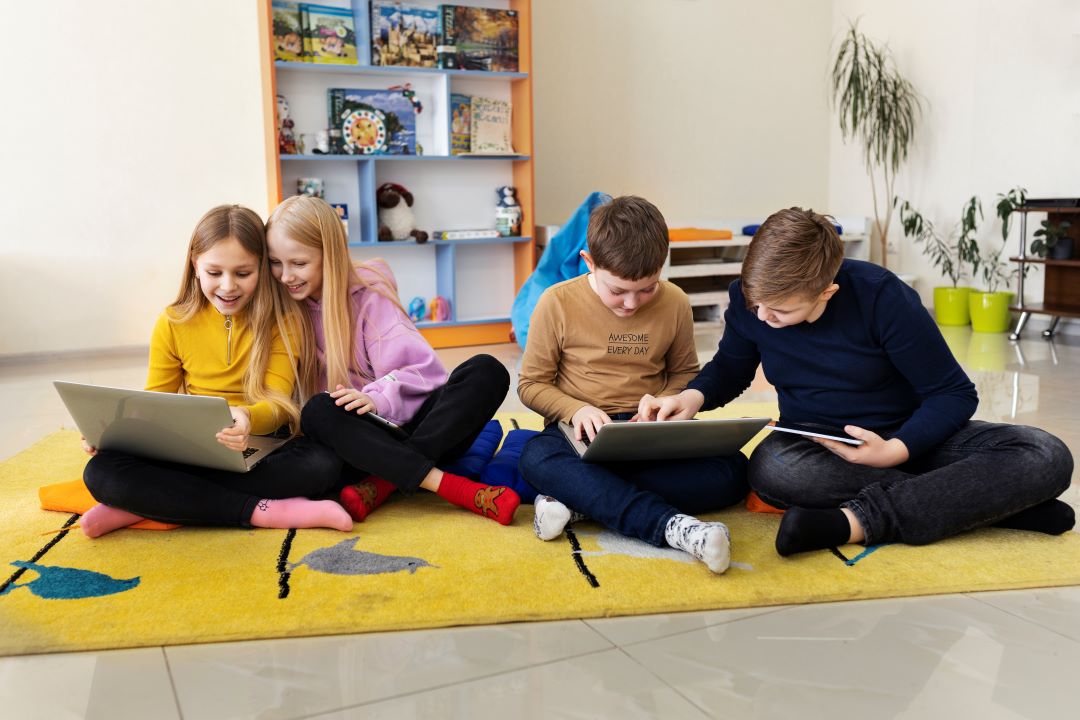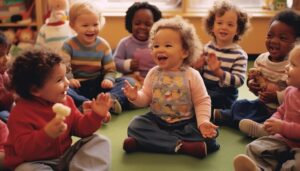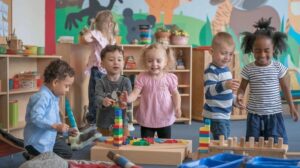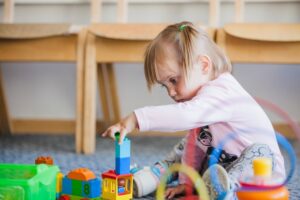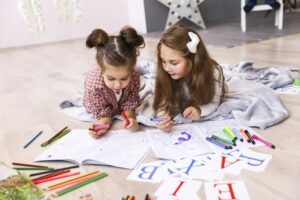At The Step by Step School in Hoboken, we understand that a child’s environment shapes how they learn, explore, and grow. Every corner of a classroom can inspire curiosity and creativity—or hinder it. That’s why creating safe and stimulating learning spaces for every child is at the core of our educational philosophy.
Children thrive when their surroundings encourage exploration, independence, and confidence. A well-designed learning space supports not only academic growth but also emotional and social development. Let’s explore how the right environment can make all the difference.
The Role of Environment in Early Development
In early childhood education, the classroom is more than a room—it’s an ecosystem. Every color, sound, and piece of furniture contributes to how children experience learning. When children feel secure and engaged, their natural curiosity flourishes.
At The Step by Step School, we create learning spaces for every child that are both inviting and purposeful. Soft lighting, safe materials, and clearly defined learning zones help children navigate their surroundings with confidence. The result? A calm and stimulating atmosphere that encourages focused learning.
Designing for Safety and Comfort
Safety is the foundation of every great classroom. From secure furniture to age-appropriate materials, everything in a preschool setting must prioritize a child’s well-being. Rounded corners, slip-resistant flooring, and proper ventilation are essential design elements that reduce risk and promote comfort.
In Hoboken, where families value both quality and care, our school ensures that parents can trust the safety of our environment. Safe learning spaces allow teachers to focus on what truly matters—helping each child grow intellectually and emotionally.
Stimulating Creativity Through Thoughtful Design
A stimulating learning environment goes beyond bright colors and toys—it’s about thoughtful engagement. Every station in our classrooms invites children to experiment and imagine. Art corners spark creativity, reading nooks encourage focus, and sensory play areas promote discovery.
Research shows that children in enriched environments develop stronger problem-solving skills and higher levels of motivation. By crafting learning spaces for every child that spark joy and curiosity, we help young learners build a lifelong love of exploration.
Supporting Social and Emotional Growth
Physical design impacts emotional well-being too. Open spaces that promote group activities encourage teamwork and communication, while quiet corners give children the space they need to self-regulate and reflect.
At The Step by Step School, our approach balances both. Each child has the freedom to choose how they engage—whether it’s building with friends, reading independently, or exploring a creative project. These choices nurture independence and emotional intelligence from an early age.
Inclusion and Accessibility for All Learners
Every child learns differently. Inclusive learning spaces for every child must accommodate a range of abilities and learning styles. From flexible seating to adaptive materials, our classrooms are designed to be accessible for everyone.
Inclusivity also extends to cultural representation—books, visuals, and classroom materials reflect diverse families and backgrounds. By seeing themselves represented, children gain a sense of belonging and confidence that supports learning success.
Partnering with Parents in the Learning Environment
Parents play an essential role in extending the classroom experience at home. When families understand how their child learns best, they can mirror similar settings—quiet reading spaces, creative play areas, or designated homework zones.
We encourage parents to visit The Step by Step School on Hudson to see how our classrooms are structured. Together, we can bridge home and school learning environments to create a consistent and nurturing experience.
The Long-Term Benefits of Thoughtful Environments
Children who learn in safe, stimulating environments are more confident, motivated, and socially aware. These spaces lay the groundwork for lifelong learning habits, problem-solving skills, and resilience.
By prioritizing learning spaces for every child, schools can create experiences that go beyond academics—shaping young minds that are ready to thrive in the world.
Final Thoughts
At The Step by Step School in Hoboken, we believe that every child deserves a learning environment where they feel safe, valued, and inspired. Our thoughtfully designed classrooms promote creativity, emotional growth, and academic success in equal measure.
If you’d like to learn more about how our environment supports your child’s development, visit our contact page to schedule a tour today. Discover how we create learning spaces for every child—spaces where confidence, curiosity, and compassion grow together.
FAQs about Learning Spaces for Every Child
1. Why are learning spaces important for early education?
Learning spaces shape how children engage, focus, and interact with others. A well-designed environment boosts creativity and confidence from the start.
2. How do safe learning spaces for every child promote growth?
Safe and secure classrooms allow children to explore freely, which supports emotional stability and encourages risk-taking in learning.
3. What makes a stimulating learning space effective?
A stimulating environment combines structure and flexibility, allowing children to learn through play, exploration, and collaboration.
4. How can parents create effective learning spaces at home?
Parents can mirror school environments by setting up quiet study areas and creative play zones that support focus and independence.
5. What role do teachers play in maintaining learning spaces for every child?
Teachers continuously adapt classroom layouts and materials to meet each child’s needs, ensuring inclusivity and engagement throughout the day.

